Pet Hair Management
How to Manage Pet Hair
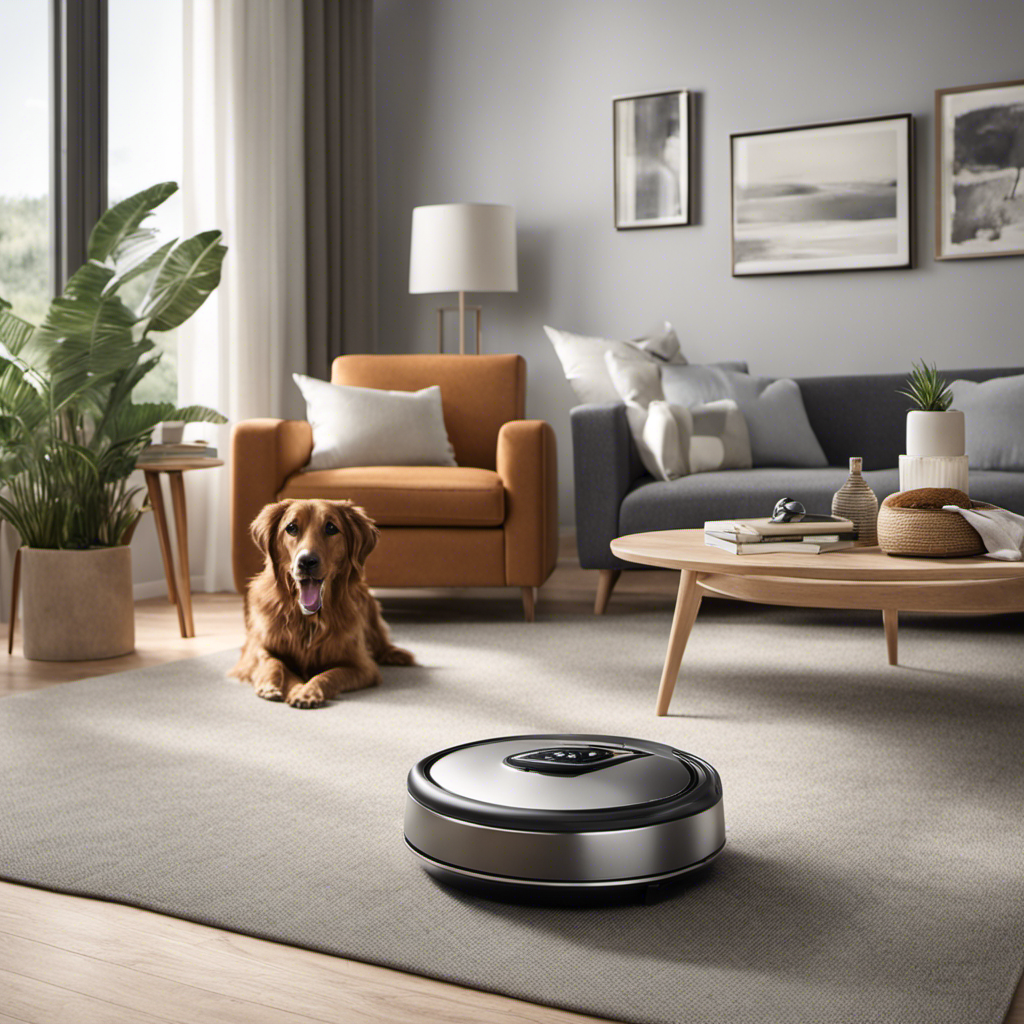
Did you know that on average, a dog sheds 50 to 100 hairs per day? This can feel like a lot for pet owners to handle, but fear not, I have a solution for you.
In this article, I’ll share essential tools, techniques, and strategies to help you keep your home hair-free. From understanding the causes of excessive pet hair to creating a regular grooming routine, you’ll learn everything you need to know to tackle this hairy situation head-on.
Let’s get started!
Key Takeaways
- Excessive shedding can be caused by allergies to pet hair, and consulting with a healthcare professional is important to determine if allergies are the cause.
- Essential tools and techniques for removing pet hair include lint rollers, regular vacuuming, rubber gloves, damp sponges, and fabric softener spray.
- Creating a regular grooming routine for your pet, including brushing and bathing, helps maintain a clean and allergen-free home.
- Effective strategies for minimizing pet hair on furniture and clothing include regular brushing and vacuuming, using lint rollers or pet hair remover brushes, and vacuuming carpets and rugs with strong suction and a pet hair attachment.
Understanding the Causes of Excessive Pet Hair
I can’t seem to figure out why my dog’s shedding has become so excessive lately. As a pet owner, it’s important to understand the causes of shedding in order to manage it effectively.
Shedding is a natural process for dogs, as it helps them get rid of old or damaged hair and regulate body temperature. However, excessive shedding can be caused by various factors, including allergies to pet hair.
Allergies occur when the immune system overreacts to certain proteins found in pet dander, saliva, or urine. These allergens can trigger symptoms such as sneezing, itching, and watery eyes in sensitive individuals.
If you or a family member are experiencing these symptoms, it’s important to consult with a healthcare professional to determine if allergies to pet hair are the cause.
Essential Tools and Techniques for Removing Pet Hair
Using a lint roller and regular vacuuming can help keep your home free from pesky pet hair. However, for those with pet hair allergies, it’s essential to take extra measures to ensure a clean and allergen-free living space.
In addition to the conventional methods, there are also homemade pet hair removal techniques that can be effective. One such method is using a rubber glove or damp sponge to rub over the surfaces where pet hair tends to accumulate. The static charge will attract the hair, making it easier to remove.
Another homemade solution is to mix equal parts water and fabric softener in a spray bottle and lightly mist the surfaces before wiping them down. This will help loosen the hair and prevent it from clinging to the furniture.
Creating a Regular Grooming Routine for Your Pet
To maintain a clean and allergen-free home, it’s important to establish a regular grooming routine for your furry friend. Grooming not only keeps your pet looking their best, but it also provides several benefits for their overall health and well-being.
One of the main benefits of grooming is preventing excessive shedding. Regular brushing and bathing help to remove loose hair and prevent it from ending up all over your furniture and clothing. By removing the loose hair, you can significantly reduce the amount of pet hair that accumulates in your home.
In the next section, I’ll discuss some effective strategies for minimizing pet hair on furniture and clothing, so you can enjoy a fur-free living space.
Effective Strategies for Minimizing Pet Hair on Furniture and Clothing
Regularly brushing and vacuuming furniture and clothing helps significantly reduce the amount of pet hair that accumulates in my home. Pet hair shedding prevention is an ongoing battle, but with a few strategies, I can keep my furniture and clothing pet hair-free.
To prevent excessive shedding, I make sure to groom my pet regularly. This not only helps remove loose hair, but it also promotes a healthy coat. Additionally, I use a lint roller or pet hair remover brush to remove any stray hairs from my clothing and furniture.
When it comes to managing pet hair on carpets and rugs, I vacuum them frequently using a vacuum cleaner with strong suction and a pet hair attachment. This helps to lift and remove any embedded pet hair.
Maintaining a Clean and Hair-Free Home Environment
I vacuum my home frequently to keep it clean and free from stray hairs. However, as a pet owner, I know that pet hair has a way of finding its way into every nook and cranny, including my car. To keep pet hair out of your car, it’s important to establish a routine of regularly cleaning and grooming your pets. Brushing them daily can help to remove loose hair before it has a chance to accumulate in your vehicle. Additionally, using seat covers or blankets can protect your car’s upholstery from pet hair.
When it comes to preventing pet hair from clogging your vacuum cleaner, there are a few steps you can take. First, make sure to regularly empty the vacuum’s canister or change the bag to prevent hair from building up. It’s also helpful to use a pet hair attachment or brush specifically designed for removing pet hair from surfaces. These attachments typically have rubber bristles that attract and lift the hair, making it easier to remove. Lastly, consider investing in a vacuum cleaner with a HEPA filter, as this can help to trap and contain pet hair and allergens.
Frequently Asked Questions
Can Excessive Pet Hair Be a Sign of a Health Problem in My Pet?
Excessive pet hair shedding can indicate allergies or health problems in pets. It’s important to monitor your pet’s shedding patterns and consult a veterinarian if you notice any changes. Diet can also play a role in pet hair shedding.
How Often Should I Groom My Pet to Prevent Excessive Shedding?
I groom my pet regularly to prevent excessive shedding. By brushing them often and using shedding prevention techniques, such as a balanced diet and regular bathing, I can keep their fur under control.
Are There Any Natural Remedies or Supplements That Can Help Reduce Pet Hair Shedding?
There are natural remedies and supplements that can help reduce pet hair shedding. Supplements like omega-3 fatty acids can improve coat health, while regular grooming and a balanced diet can also make a difference.
What Types of Fabrics or Materials Are Less Prone to Attracting Pet Hair?
Pet hair resistant fabrics such as microfiber or leather can help minimize pet hair on furniture. Regular vacuuming, using lint rollers, and keeping pets groomed can also help keep pet hair under control.
Can Vacuuming Alone Effectively Remove All Pet Hair From My Home?
Vacuuming alone may not effectively remove all pet hair from your home. To manage pet hair, try using different vacuuming techniques such as using a brush attachment or consider alternative cleaning methods like using lint rollers or pet hair removers.
Conclusion
In conclusion, managing pet hair can be a never-ending battle, but with the right tools and techniques, it’s possible to keep your home clean and hair-free.
By regularly grooming your pet and implementing strategies to minimize hair on furniture and clothing, you can create a more comfortable living environment for both you and your furry friend.
Remember, a little extra effort can go a long way in maintaining a pet-friendly home.
Janet is an esteemed member of our dedicated team at Pet Hair Vacuum Critic, where her profound passion for pets and her exceptional writing talents combine to produce informative and engaging content for our readers.
Janet’s journey into the realm of pet care and pet hair management stems from her personal experiences as a devoted pet owner. Her firsthand understanding of the challenges and joys that come with living alongside furry companions fuels her dedication to assisting others in navigating the intricate world of pet hair removal and management.
Pet Hair Management
What Type Carpet Is Easiest to Clean Pet Hair Out of
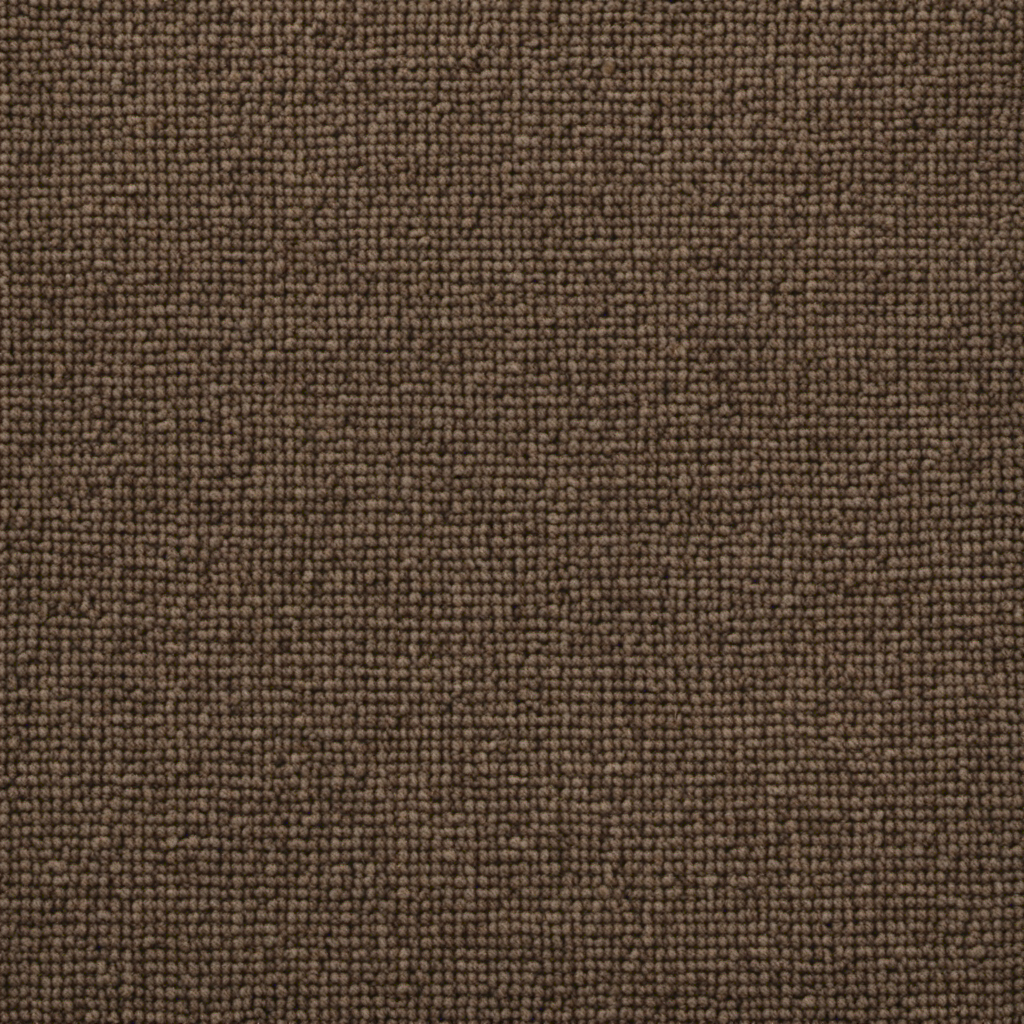
As a pet owner, I have learned from challenging situations that keeping a clean home can be difficult, especially when dealing with pet fur. But fret not! I am eager to share the knowledge and skills I have acquired on the easiest type of carpet to clean pet hair from.
From my thorough research, I’ve discovered that synthetic fiber carpets with low pile and stain-resistant properties are the way to go. So, let’s dive in and find the perfect carpet to keep your home fur-free!
Key Takeaways
- Synthetic fiber carpets are easier to clean pet hair out of due to their smoother surface and resistance to static electricity.
- Low pile carpets are also easy to clean pet hair out of, especially when using a vacuum cleaner with strong suction and a rotating brush or beater bar.
- Stain-resistant carpets repel spills and make it easier to remove pet hair, but professional carpet cleaning is recommended for a thorough clean.
- Loop carpets are durable and resistant to wear and tear, but regular vacuuming and deep cleaning methods like steam cleaning or dry cleaning are necessary to remove pet hair.
Synthetic Fiber Carpets
I find that synthetic fiber carpets are the easiest to clean pet hair out of. Compared to natural fiber alternatives, synthetic fibers have a smoother surface that prevents pet hair from getting deeply embedded. This makes it easier to remove the hair using a vacuum cleaner or even just a simple broom. Additionally, synthetic fibers are less likely to attract static electricity, which can further help in the removal of pet hair.
To maintain synthetic fiber carpets and keep them pet hair-free, there are a few tips to follow. Firstly, regular vacuuming is essential to prevent the hair from accumulating. It’s recommended to vacuum at least once or twice a week, focusing on high traffic areas and places where your pet spends most of their time.
Secondly, using a carpet rake or brush can help loosen any stubborn pet hair that may be trapped in the fibers.
Lastly, consider using a carpet cleaner specifically designed for pet stains and odors to ensure a thorough cleaning.
Low Pile Carpets
Vacuuming low pile carpets is a breeze when it comes to removing pet hair. As someone who’s dealt with this issue firsthand, I’ve learned a few valuable vacuuming techniques that make the process even easier. Here are some tips and tricks that have worked wonders for me:
- Use a vacuum with strong suction power to effectively lift pet hair from the carpet fibers.
- Opt for a vacuum cleaner with a rotating brush or beater bar, as this helps loosen and pick up stubborn pet hair.
- Consider using a vacuum with a HEPA filter to trap and contain allergens like pet dander.
- Regularly empty and clean the vacuum’s canister or bag to maintain optimal performance.
With these vacuuming techniques, low pile carpets are a great choice for pet owners who want an easy-to-maintain flooring option.
Now, let’s move on to discussing stain-resistant carpets and how they can further simplify your cleaning routine.
Stain-Resistant Carpets
Maintaining stain-resistant carpets is a breeze thanks to their ability to repel spills and resist discoloration.
When it comes to removing pet hair from these carpets, I’ve found that a good vacuum cleaner with strong suction and a brush attachment works wonders. The brush helps to loosen the pet hair from the carpet fibers, allowing the suction to effectively remove it.
Additionally, using a lint roller or a rubber glove can be helpful in picking up any stray hairs that the vacuum might’ve missed.
However, for a deeper and more thorough clean, I highly recommend professional carpet cleaning for pet owners. Professional cleaners have specialized equipment and techniques to remove pet hair and dander, as well as any odors that may have seeped into the carpet.
This not only helps to maintain a clean and fresh-smelling home, but it also promotes a healthier environment for both you and your furry friend.
Now, let’s move on to the next section about loop carpets…
Loop Carpets
Loop carpets can be a great choice for high-traffic areas due to their durability and resistance to wear and tear. As someone who’s worked in the carpet industry for several years, I can attest to the fact that loop carpets aren’t only durable, but they’re also easy to clean.
Here are some tips on how to keep your loop carpet looking its best:
- Use the best vacuum cleaners for loop carpets, such as those with adjustable height settings and strong suction power.
- Regularly vacuum your loop carpet to remove dirt and debris that can get trapped in the loops.
- Consider using carpet cleaning techniques like steam cleaning or dry cleaning to deep clean your loop carpet and remove any stubborn stains.
- Use a carpet protector spray to prevent future stains and make it easier to clean spills.
Dark Colored Carpets
As someone who’s worked in the carpet industry for several years, I can confidently say that dark colored carpets can add a touch of elegance and sophistication to any room. However, they also require special care and attention when it comes to cleaning, especially if you’ve pets.
When it comes to vacuuming dark colored carpets, it’s important to choose a vacuum cleaner with strong suction power and a brush roll that can effectively remove embedded pet hair. Look for vacuums specifically designed for pet hair removal, as they often come with specialized attachments that can reach deep into the carpet fibers.
Additionally, consider using a rubber broom or a pet hair removal brush to loosen and remove pet hair before vacuuming. Regular maintenance and thorough cleaning will ensure that your dark colored carpets remain beautiful and pet hair-free for years to come.
Frequently Asked Questions
How Often Should I Vacuum My Carpet to Effectively Remove Pet Hair?
I vacuum my carpet once a week to effectively remove pet hair. However, reducing shedding starts with grooming your pet regularly. As for the best vacuum cleaners for pet hair removal, I recommend ones with strong suction and specialized attachments.
Are There Any Specific Cleaning Products or Methods That Work Best for Removing Pet Hair From Carpets?
I’ve found that using a pet hair vacuum attachment and a rubber broom are effective methods for removing pet hair from carpets. Additionally, using a fabric softener sheet or damp rubber gloves can help.
Can I Use a Steam Cleaner on Synthetic Fiber Carpets to Remove Pet Hair?
Yes, you can use a steam cleaner on synthetic fiber carpets to remove pet hair. However, I would not recommend using a steam cleaner on wool carpets as it can cause damage.
Are There Any Natural or Homemade Remedies That Can Help With Pet Hair Removal From Carpets?
When it comes to removing pet hair from carpets, I’ve found that natural remedies and homemade solutions can be quite effective. From using a rubber glove to dampening a sponge, there are plenty of options to try.
Are There Any Carpet Materials or Types That Are Known to Attract Less Pet Hair Than Others?
In my experience, I’ve found that certain carpet materials, like low-pile or synthetic options, shed less and are easier to clean pet hair out of. Additionally, hypoallergenic carpets can also help minimize pet hair accumulation.
Conclusion
After considering various factors, it’s clear that the best type of carpet for cleaning pet hair is a low pile, synthetic fiber carpet that’s stain-resistant. These carpets are designed to repel pet hair and are easy to vacuum.
Additionally, dark colored carpets are recommended as they hide pet hair better.
By choosing the right type of carpet, pet owners can minimize the time and effort required to keep their homes clean and hair-free.
Janet is an esteemed member of our dedicated team at Pet Hair Vacuum Critic, where her profound passion for pets and her exceptional writing talents combine to produce informative and engaging content for our readers.
Janet’s journey into the realm of pet care and pet hair management stems from her personal experiences as a devoted pet owner. Her firsthand understanding of the challenges and joys that come with living alongside furry companions fuels her dedication to assisting others in navigating the intricate world of pet hair removal and management.
Pet Hair Management
What Is the Cheapest Best Carpet Color That Does Not Show Stains and Pet Hair
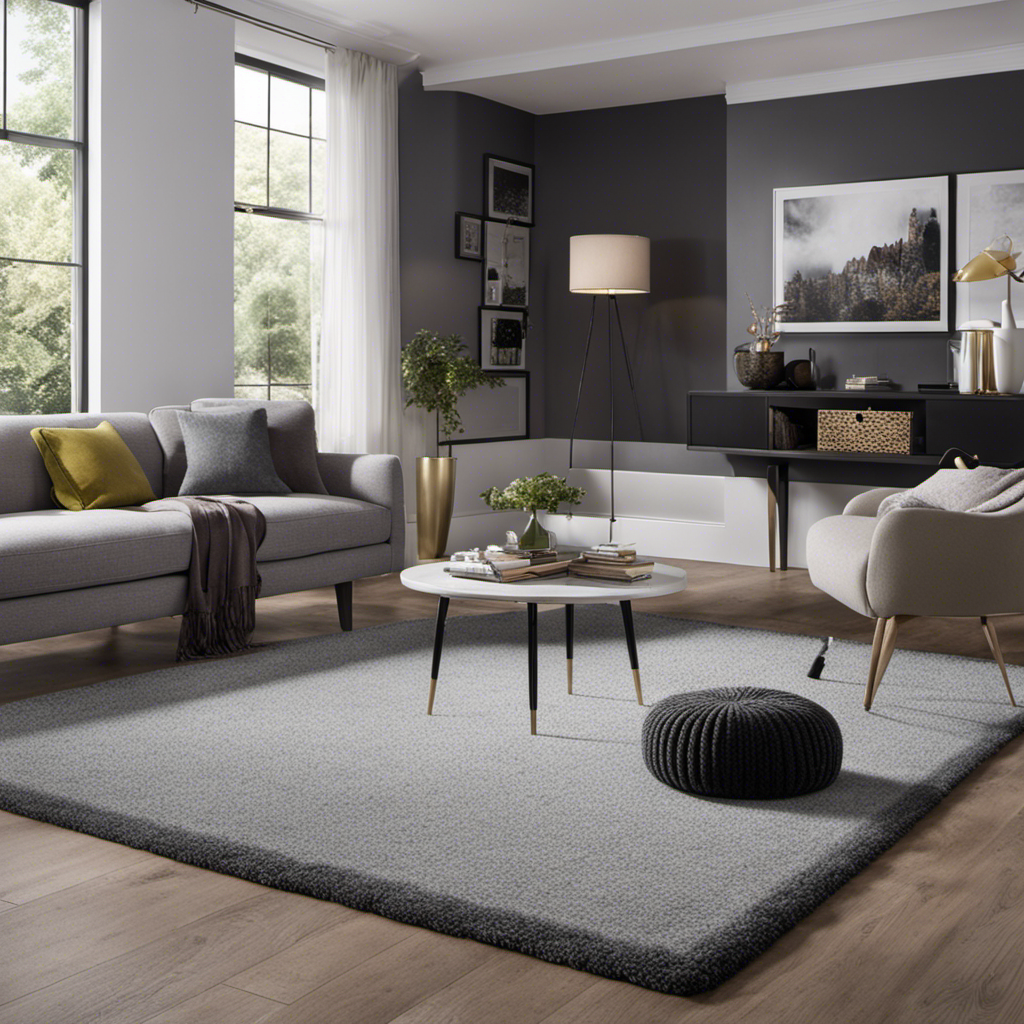
For those on a budget who want to find the perfect carpet color that hides stains and pet hair, it may seem impossible. But fear not, as I have made it my mission to find the most cost-effective and efficient carpet color to keep your floors clean.
Join me as we delve into the science behind stain resistance.
Explore the impact of pet hair on color choices.
And discover affordable options that will make your cleaning routine a breeze.
Key Takeaways
- Neutral colors like beige, tan, or light gray are budget-friendly options that can effectively hide stains and pet hair.
- Darker colors such as dark brown or charcoal gray are also affordable choices that provide excellent stain and pet hair resistance.
- Comparing different carpet colors can help find the best option that balances cost-effectiveness with stain and pet hair hiding capabilities.
- Regular maintenance and cleaning, such as vacuuming and spot cleaning, are essential for maintaining a stain and pet hair-resistant carpet, regardless of the color chosen.
The Science Behind Carpet Color and Stain Resistance
I’ve always wondered how carpet color affects its resistance to stains and pet hair.
When it comes to carpet color choices, there’s a science behind it. The psychology of carpet color choices plays a significant role in our perception of cleanliness. Lighter colors like beige or light gray are popular choices because they give the illusion of cleanliness and can hide dirt and stains better than darker colors.
However, it’s important to consider the role of lighting in carpet color perception. Different lighting conditions can affect how we perceive colors and their ability to hide stains. Natural light can make stains more noticeable, while artificial light can alter the appearance of colors.
Therefore, when selecting a carpet color that’s resistant to stains and pet hair, it’s crucial to consider both the psychology of color choices and the lighting conditions in your space.
Understanding the Impact of Pet Hair on Carpet Color Choices
Having pets means considering how their hair will affect the color of my carpet. As an expert in carpet color psychology, I understand the importance of choosing the right color that can hide pet hair and stains.
Here are some key points to consider:
- Neutral colors like beige, tan, or gray are great options as they can camouflage pet hair.
- Patterns and textures can also help to hide pet hair and stains.
- Darker colors like navy blue or dark brown can mask the appearance of pet hair and stains.
- Regular vacuuming and grooming your pets can significantly reduce the amount of hair on your carpet.
When it comes to DIY stain and pet hair removal techniques, there are a few effective methods to consider:
- Using a lint roller to remove pet hair from your carpet.
- Mixing a solution of vinegar and water to remove pet stains.
- Sprinkling baking soda on your carpet to absorb pet odors.
Exploring Affordable Carpet Colors That Hide Stains and Pet Hair
To save money, I opted for a budget-friendly carpet color that effectively conceals any stains or pet hair.
When it comes to choosing a color for your carpet, it’s important to consider both cost-effectiveness and its ability to hide stains and pet hair. There are several color options that meet these criteria.
Neutral colors like beige, tan, or light gray are popular choices as they not only camouflage stains but also blend well with various decor styles. Additionally, darker colors such as dark brown or charcoal can effectively hide any potential stains or pet hair.
It’s also worth comparing different carpet colors to see which ones offer the best stain and pet hair resistance.
Tips for Choosing the Best Carpet Color on a Budget
When considering a budget-friendly carpet color, it’s important to prioritize cost-effectiveness while also ensuring it effectively conceals any stains or pet hair. Here are some tips to help you choose the best carpet color on a budget:
-
Consider neutral shades: Neutral colors like beige, light gray, or taupe aren’t only affordable but also great at hiding stains and pet hair.
-
Opt for darker tones: Darker colors like navy blue or charcoal gray can also be budget-friendly options that effectively disguise any dirt or pet mess.
-
Look into carpet color psychology: Certain colors can affect our mood and perception. For example, earthy tones like brown or green can create a warm and inviting atmosphere in your space.
-
Consider the role of lighting: Lighting can greatly impact the way carpet colors appear. Natural light can bring out the true colors, while artificial lighting may alter their appearance.
Maintenance and Cleaning Strategies for Stain and Pet Hair-Resistant Carpets
I find that regular vacuuming and spot cleaning are effective strategies for maintaining a carpet that resists stains and pet hair.
When it comes to carpet color psychology, darker shades like deep blues, browns, or grays are known to hide stains and pet hair better than lighter colors.
However, regardless of the color, proper maintenance is key to keeping your carpet looking clean and fresh.
To tackle stains, I recommend using DIY stain removal techniques such as blotting the stain with a mixture of mild detergent and warm water.
For pet hair, a vacuum with a powerful suction and a brush roll designed specifically for pet hair removal can be extremely helpful.
Additionally, incorporating a regular deep cleaning schedule will ensure that your carpet stays in top-notch condition and continues to resist stains and pet hair.
Frequently Asked Questions
Can Carpet Color Really Affect the Visibility of Stains and Pet Hair?
Carpet color can indeed affect the visibility of stains and pet hair. Certain colors, like dark shades or patterns, can make stains and pet hair less noticeable. It’s important to consider both the psychological impact and cultural significance of carpet color choices.
Are There Any Specific Carpet Colors That Are Known for Their Stain and Pet Hair Resistance?
In my experience, some carpet colors excel at hiding dirt and footprints while enhancing a room’s aesthetics. It’s fascinating how carpet color impacts the overall ambiance and can make a space feel more cozy or vibrant.
How Often Do I Need to Clean a Stain and Pet Hair-Resistant Carpet?
To maintain the durability of a stain and pet hair resistant carpet, it is important to clean it regularly. I recommend vacuuming at least once a week and treating stains promptly with a carpet cleaner.
Are There Any Special Cleaning Products or Techniques Recommended for Stain and Pet Hair-Resistant Carpets?
When it comes to cleaning stain and pet hair-resistant carpets, there are indeed special cleaning products and effective techniques available. These can help maintain the carpet’s durability and appearance over time.
Can I Still Choose a Carpet Color That I Like, Even if It May Not Be the Most Stain and Pet Hair-Resistant Option?
Yes, you can still choose a carpet color that you like, even if it may not be the most stain and pet hair-resistant option. It’s important to weigh the pros and cons of stain and pet hair resistant carpets before making a decision.
Conclusion
In conclusion, when it comes to finding an affordable carpet color that hides stains and pet hair, it’s all about understanding the science behind color and stain resistance.
By exploring different options and considering maintenance and cleaning strategies, you can find a carpet color that fits your budget and keeps your home looking clean and fresh.
So, don’t stress about stains and pet hair anymore – with the right carpet color, you can enjoy a beautiful and low-maintenance flooring solution.
Janet is an esteemed member of our dedicated team at Pet Hair Vacuum Critic, where her profound passion for pets and her exceptional writing talents combine to produce informative and engaging content for our readers.
Janet’s journey into the realm of pet care and pet hair management stems from her personal experiences as a devoted pet owner. Her firsthand understanding of the challenges and joys that come with living alongside furry companions fuels her dedication to assisting others in navigating the intricate world of pet hair removal and management.
Pet Hair Management
What to Spray on Carpet to Resist Pet Hair
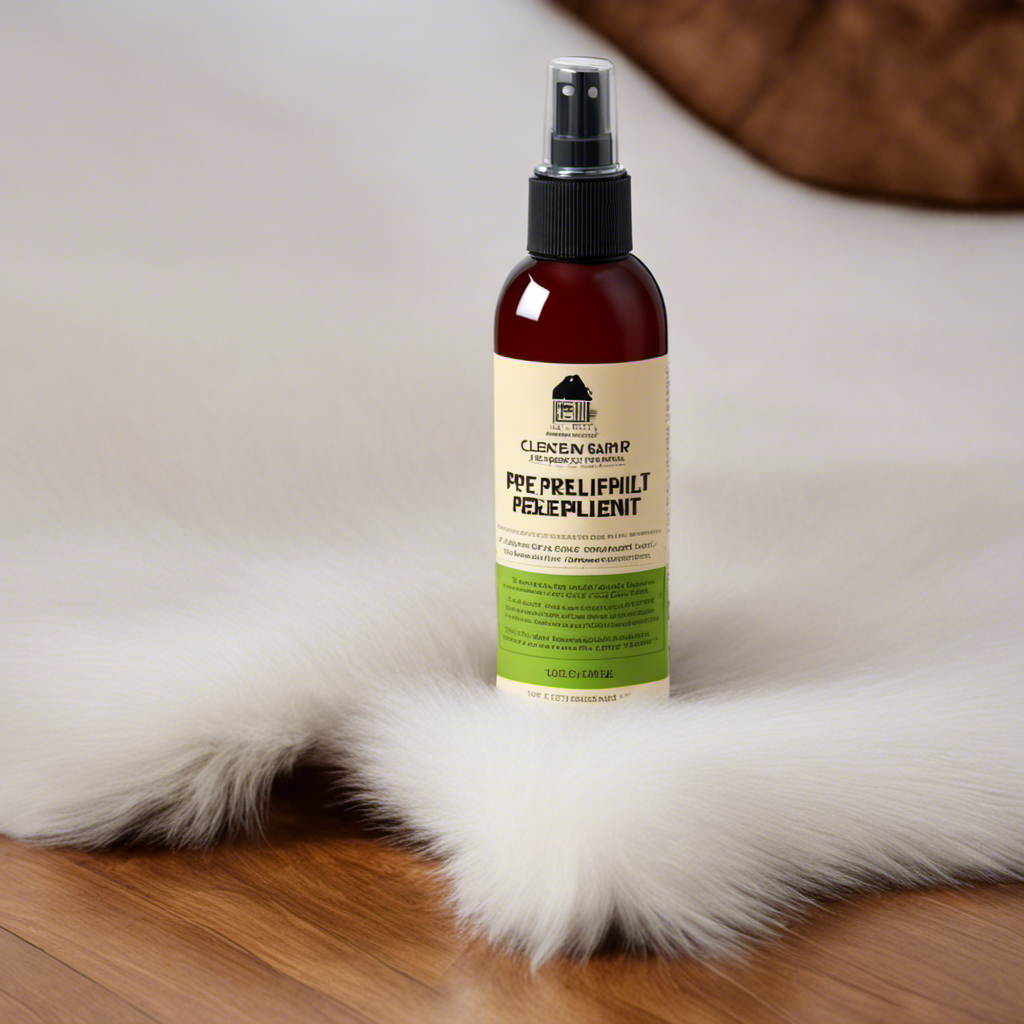
Hey there! Dealing with pet hair on carpets can be a real pain, right? I feel you! That’s why I’ve done some research to discover some amazing sprays that are specially made to keep pet hair away, so your carpets can stay clean and hair-free.
In this article, I’ll be sharing some natural DIY sprays, commercial products, and even essential oil mixtures that you can use to tackle this furry problem.
Get ready to say goodbye to pesky pet hair on your carpets!
Key Takeaways
- Natural sprays like water and fabric softener or vinegar and water can help reduce static electricity and neutralize odors, repelling pet hair from carpets.
- Maintaining moderate temperature and humidity levels in the home can contribute to reducing pet hair shedding.
- Homemade DIY carpet sprays using ingredients like vinegar, water, baking soda, and essential oils can be cost-effective solutions for preventing pet hair buildup.
- Commercial products designed for pet hair control on carpets provide convenient and time-saving solutions, enhancing vacuum cleaner performance and preventing pet hair from sticking to fibers.
Natural Sprays for Pet Hair Resistance
I’ve found that using a natural spray on my carpet really helps resist pet hair. When it comes to reducing pet hair shedding, homemade remedies can be a great solution.
One effective homemade spray is a mixture of water and fabric softener. Simply dilute fabric softener with water in a spray bottle and lightly mist the carpet. The fabric softener helps to reduce static electricity, making it harder for pet hair to stick to the carpet fibers.
Another option is a vinegar and water solution. Mix equal parts vinegar and water in a spray bottle and spray it onto the carpet. Vinegar helps to neutralize odors and can also help to repel pet hair.
It’s important to remember that environmental factors like humidity and temperature can contribute to pet hair accumulation. Keeping your home at a moderate temperature and humidity level can help reduce shedding and make it easier to control pet hair.
DIY Carpet Sprays to Prevent Pet Hair Build-up
To keep my floors clean and pet hair-free, I’ve found that making my own homemade carpet sprays is an effective solution. These homemade remedies are easy to make and use ingredients that you probably already have in your pantry.
One popular DIY solution is a mixture of vinegar and water. Simply combine equal parts vinegar and water in a spray bottle and mist it over your carpets. Vinegar helps to neutralize odors and can also help to repel pet hair.
Another option is to mix baking soda and essential oils. Baking soda absorbs odors and the essential oils provide a fresh scent. Just sprinkle the mixture onto your carpets, let it sit for a few minutes, and then vacuum it up.
These do-it-yourself solutions are cost-effective and can be a great alternative to commercial products for pet hair control on carpets.
Commercial Products for Pet Hair Control on Carpets
I find that using commercial products specifically designed for controlling pet hair on carpets is a convenient and effective solution. These products have been formulated with powerful ingredients that target and remove pet hair from deep within the carpet fibers.
Here are three reasons why I believe they’re the best option:
-
Effectiveness of vacuum cleaners for pet hair removal on carpets: Commercial pet hair control products enhance the performance of vacuum cleaners by loosening and lifting stubborn pet hair, making it easier to remove.
-
Comparison of carpet cleaning methods for pet hair removal: While regular vacuuming is essential, it may not be enough to completely eliminate pet hair from carpets. Commercial products provide an additional layer of protection by repelling pet hair and preventing it from sticking to the carpet fibers.
-
Convenience and time-saving: Using commercial products is quick and easy. Simply spray the product on the carpet, let it sit for a few minutes, and then vacuum as usual. This method saves time and ensures a thorough removal of pet hair.
Overall, commercial products designed for pet hair control on carpets are a reliable and efficient solution to keep your carpets clean and free from pesky pet hair.
Essential Oil Mixtures for Repelling Pet Hair on Carpets
Using essential oil mixtures is a natural and effective way to repel pet hair from carpets.
When it comes to homemade remedies for reducing pet hair shedding on carpets, essential oils offer numerous benefits.
Not only do they help prevent pet hair from sticking to your carpets, but they also leave behind a pleasant scent.
Certain essential oils, such as lavender, eucalyptus, and lemongrass, have properties that repel pet hair and deter pets from leaving their hair behind.
To create your own essential oil mixture, simply mix a few drops of your chosen oil with water in a spray bottle. Shake well and then lightly mist your carpets.
The oils will help reduce static and make it easier to vacuum up any remaining pet hair.
Tips and Tricks for Maintaining Pet Hair-Free Carpets
Maintaining a pet hair-free carpet requires consistent cleaning and regular grooming of your furry friend. Here are some tips and tricks to help you keep your carpets clean and free from pet hair:
-
Vacuuming techniques for effective pet hair removal:
- Use a vacuum cleaner with a strong suction power and a brush attachment to loosen and remove pet hair from the carpet fibers.
- Vacuum in different directions to ensure that you pick up all the hair.
- Consider using a vacuum cleaner specifically designed for pet hair removal, as they often have specialized features and attachments.
-
Choosing the right carpet materials for pet-friendly homes:
- Opt for carpets with shorter pile height, as they’re easier to clean and less likely to trap pet hair.
- Look for carpets made from synthetic fibers like nylon or polyester, as they’re more resistant to stains and easier to clean.
- Consider getting carpet tiles or area rugs that can be easily removed and cleaned if your pet tends to shed a lot.
Frequently Asked Questions
Can I Use These Sprays on Other Surfaces Besides Carpets?
Yes, you can use these sprays on other surfaces besides carpets. They are effective at resisting different types of pet hair on various surfaces like upholstery, bedding, and curtains.
How Often Should I Apply the Sprays to My Carpets?
I apply the spray on my carpets every few weeks to keep pet hair at bay. The duration of the spray’s effectiveness varies, but it usually lasts for a month or so. I recommend trying different brands to find the best results.
Are These Sprays Safe for Pets?
Using chemical sprays around pets can pose potential health risks. It’s important to consider natural alternatives for resisting pet hair on carpets. These options are safer and can help maintain a pet-friendly environment.
Can I Make My Own Spray Using Essential Oils?
I can make my own DIY pet hair spray using essential oils. It’s a practical and alternative option to other carpet sprays. By incorporating symbolism, I can create a deeper meaning for the audience.
Will These Sprays Completely Eliminate Pet Hair on Carpets?
Sprays can effectively reduce pet hair on carpets, but they may not completely eliminate it. It’s important to manage expectations. Some sprays may have potential side effects, so always follow the instructions and test in a small area first.
Conclusion
In conclusion, there are various options available to help resist pet hair on carpets. Natural sprays, DIY solutions, commercial products, and essential oil mixtures can all be effective in minimizing pet hair build-up.
By incorporating these tips and tricks into your carpet maintenance routine, you can enjoy a pet hair-free home and a cleaner living environment. Remember to choose the method that suits your preferences and needs best.
Janet is an esteemed member of our dedicated team at Pet Hair Vacuum Critic, where her profound passion for pets and her exceptional writing talents combine to produce informative and engaging content for our readers.
Janet’s journey into the realm of pet care and pet hair management stems from her personal experiences as a devoted pet owner. Her firsthand understanding of the challenges and joys that come with living alongside furry companions fuels her dedication to assisting others in navigating the intricate world of pet hair removal and management.
-

 Guides & FAQs2 weeks ago
Guides & FAQs2 weeks agoLocal Customer Raves About Prompt Delivery
-
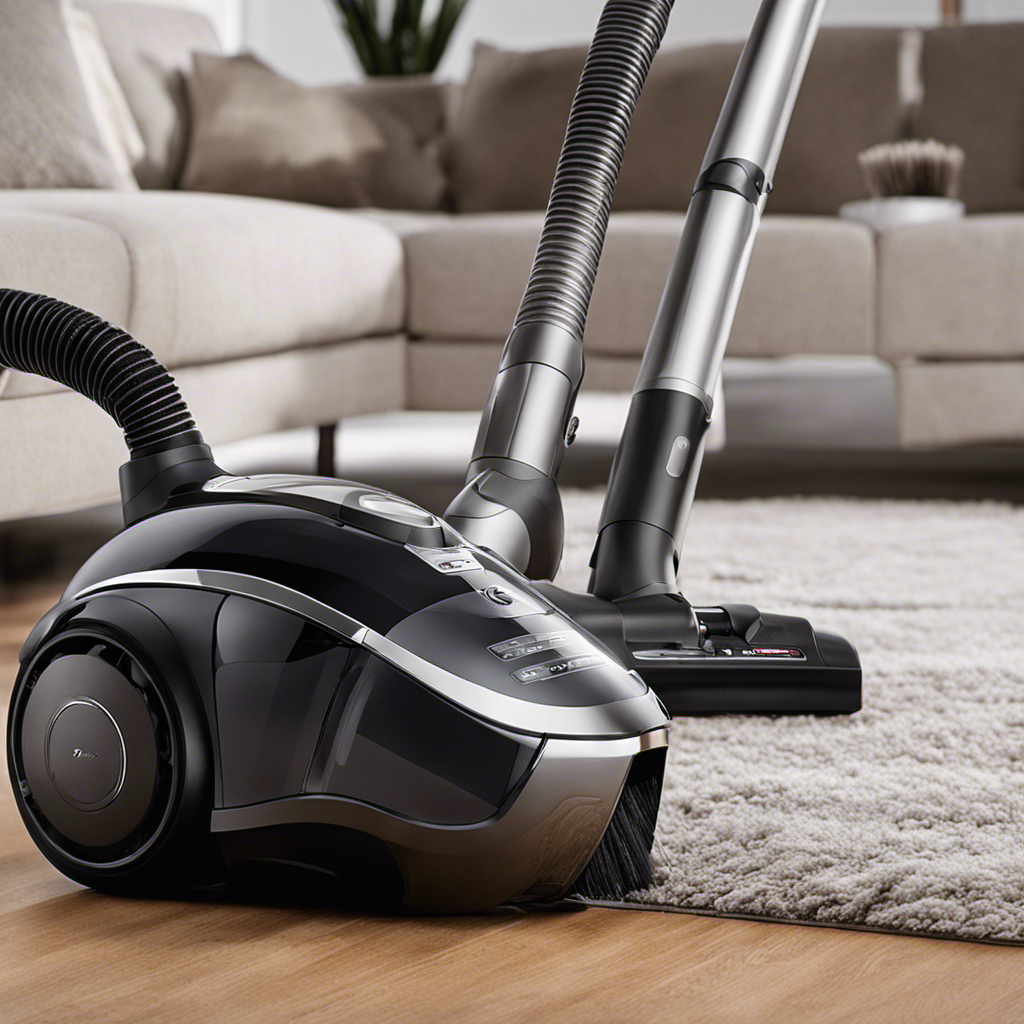
 Vacuums for Pet Hair Removal3 months ago
Vacuums for Pet Hair Removal3 months agoWhat Is Different About a Pet Hair Vacuum
-

 Guides & FAQs2 weeks ago
Guides & FAQs2 weeks agoLocal Resident Raves About Amazing Service
-

 Guides & FAQs2 weeks ago
Guides & FAQs2 weeks agoLocal Customer Raves About Graco’s Excellent Service
-

 Guides & FAQs2 weeks ago
Guides & FAQs2 weeks agoThrilled Customer Raves About Graco’s Outstanding Products
-

 Vacuums for Pet Hair Removal3 months ago
Vacuums for Pet Hair Removal3 months agoWhat Is Best Vacuum for Pet Hair
-

 Guides & FAQs2 weeks ago
Guides & FAQs2 weeks agoSydney Customer Raves About Amazing Paint Experience
-

 Guides & FAQs2 weeks ago
Guides & FAQs2 weeks agoPet Hair Under Contact Lense, What to Do




